How Do Free Apps Make Money? Plus, Answers to Your Other Burning Monetization Questions

How Do Free Apps Make Money?
Free apps make money by playing the long game—monetizing every tap, swipe, and scroll with strategies like ads, in-app purchases, and subscriptions. Instead of charging users upfront, they let users enjoy the ride and turn their engagement into cash.
With millions of apps to choose from, most users won’t pay upfront when a free option exists (I know I won’t). That’s why the world’s most profitable apps focus on monetizing usage instead of selling access.
The biggest money-making apps—TikTok, YouTube, and Tinder—are free. They don’t charge users upfront, yet they generate billions.

Source: Forbes
Let’s break down how they do it—and how you can, too.
Table of Contents
- Key takeaways
- Paid vs. free apps: What’s the difference?
- How You Can Make Money With Your Free App: 7 App Monetization Models Proven by Successful Apps
- People also ask
How free apps make money: Key takeaways
- Freemium models are powerful. Give users a taste for free and offer irresistible upgrades—people love trying before they buy, especially when the free stuff hooks them.
- In-app ads can be a goldmine IF done right. Place them strategically, and your app will make money without charging a thing.
- The right in-app purchases keep wallets open. The perfect way to get paid for content users actually want. A boost here, a level-up there—it’s all about timing and making them feel like they need that next hit of awesomeness.
- Social gifting turns every send into a sweet commission. Users send gifts or cash, and you pocket a small fee every time. It’s like setting up a gift exchange where you always get something in return.
- Affiliate marketing is all about matching products to your users’ desires.
- Crowdfunding helps fund development without giving up equity. Get users invested in your journey before it’s even launched. Your fans will love how they’ll feel like they’re part of the process from the start.
- Data is your silent partner. If used responsibly, user data can help you create tailored experiences and increase ad relevancy—just make sure you stay GDPR-compliant.
Paid vs. free apps: What’s the difference?
Paid apps make money instantly by charging users to download. But getting people to pay upfront can be tough when free apps are everywhere. Free apps, on the other hand, don’t charge anything to download, but you’ll need to get creative with ads, in-app purchases, subscriptions, and more to start earning.
While paid apps bring in quick cash, free apps can attract a larger user base and make money later as users keep coming back. The success lies in how well you make people stick around.
How You Can Make Money With Your Free App: 7 App Monetization Models Proven by Successful Apps
1. Freemium apps
The freemium model is all about giving users a taste of your app for free and then getting them to pay for the good stuff. They can enjoy the basics at no charge, but the more advanced features? That’s where you get them to open their wallets. It’s a killer app monetization strategy used by top apps like Dropbox and Tinder.
The trick? Don’t give away everything. Make users fall in love with your app, but keep just enough locked behind a subscription to make them want more. Keep essential features free to keep them hooked, but add those irresistible premium perks that users will pay for once they’ve tasted the value.
Insider tip for app monetization
Deciding whether a feature should be premium typically depends on its importance to the app. If the feature isn’t critical to the core experience, it can be made premium. However, if your research shows that many users will love it and it could attract more people, you might want to consider making it premium.

Brian Wong
Product Manager

Claudia Dean World nails this. They offer free workouts to get users in, then make premium content feel like an exclusive club. The app hit trending status and gained 10,000 downloads in its first week. It’s also earned rave reviews, with over 200 ratings and a 4.9-star average on the Apple App Store.
See how they did it here: Claudia Dean World on Appetiser
What are the pros and cons of the freemium model?
| Pros | Cons |
|---|---|
| Easy to attract users | Hard to get app users to pay for extras |
| Users can try it risk-free | Free features might not be enough to keep them engaged |
| Can earn from those who upgrade | Users may just stay on the free plan forever |
| Lets you show what your app can do | Too many restrictions can frustrate users |
| Lower barrier to entry for new users | Users might not see the value in paying for extras |
2. In-app ads
In-app ads are ads that show up within your app, and you get paid every time a user sees, clicks, or interacts with them. It’s an easy way to monetize because the app is still free to download, but you’re still making cash off all those eyeballs. About 59% of app publishers use ads and expect to make $344 billion in 2024.

Source: market.us
You can use different types of ads to keep things fresh:
- Interstitial ads are full-screen pop-ups that appear between actions, like when you switch levels in a game.
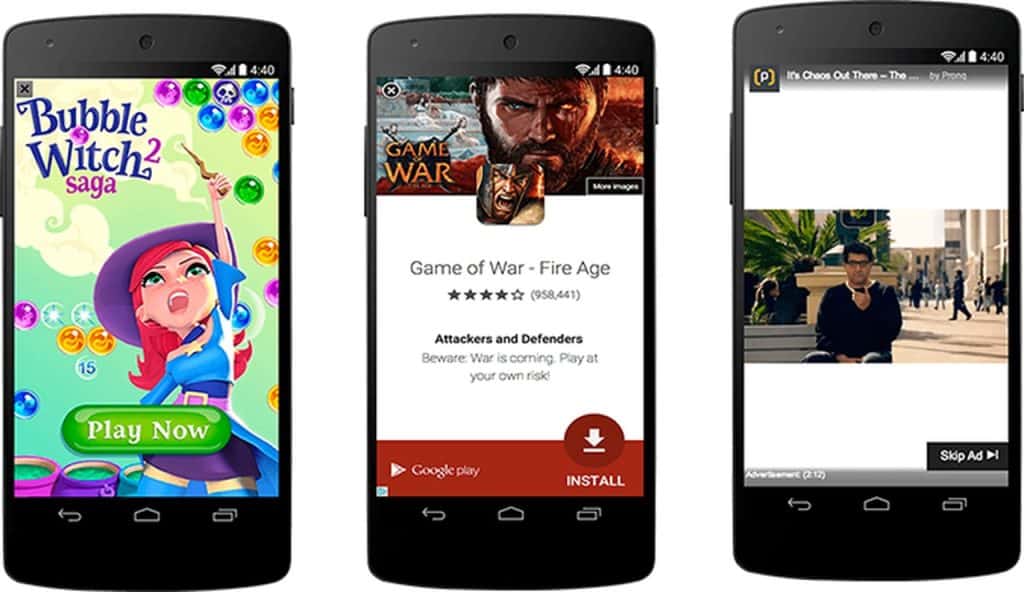
Source: MobileAction
- Banner ads are the smaller ones you see at the top or bottom of the screen.

Image source: Hubspot
- Rewarded video ads let users watch a video for a reward, which is a win-win because they get something for their time, and you get paid.
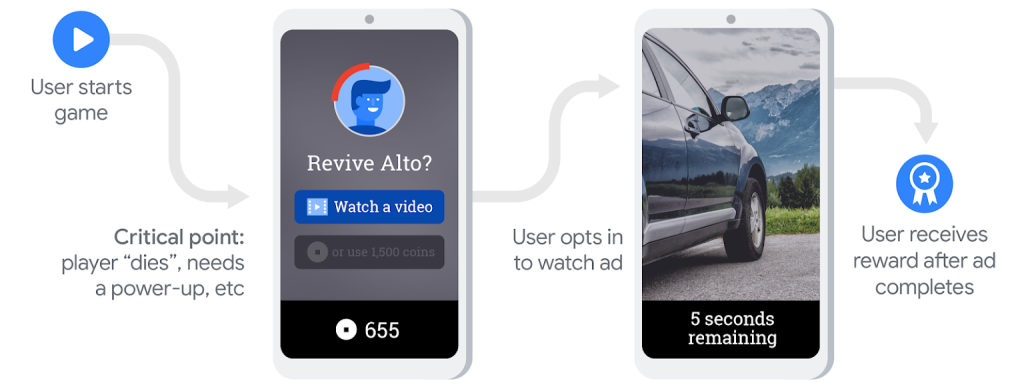
Source: Google Ad Manager
You set these up through ad networks like Google AdMob, they’ll serve up the ads for you. All you have to do is make sure they fit seamlessly into the app and don’t annoy your users.
Insider tip for app monetization
Clients often worry ads will drive users away, but it’s all about execution. Well-integrated ads can enhance the experience, and an ad-free option keeps choices open. Don’t fear ads—use them wisely.

Brian Wong
Product Manager
What are the pros and cons of in-app ads?
| Pros | Cons |
|---|---|
| App stays free for users | Too many ads can annoy users |
| Earn money without charging users | Ads can interrupt the app experience |
| Works well with lots of users | Earnings depend on ad clicks/views |
| Different ad types to choose from | Poorly placed ads can hurt ratings |
See related article: How to Get Ads for Your App and Monetize Effectively
3. Social gifting
Social gifting is when you send money, gifts, or donations to others through an app, adding a personal touch to the digital payment process.
Now, how does this help you as an app publisher? Simple: every time a user sends money or a gift, you take a small transaction fee. It’s like getting paid every time someone shares the love.
 Source: Venmo
Source: Venmo
Venmo, for example, charges a fee for instant transfers or credit card payments. By making the whole process more engaging and social, you’ve got users coming back to send more—and keep the revenue rolling in.
What are the pros and cons of social gifting?
| Pros | Cons |
|---|---|
| Keeps users active by making money transfers fun and personal. | Can be a turn-off for users if fees are too high. |
| Users feel more connected to the app by gifting. | Not all users want or need social gifting features. |
| You make money with every transaction. | People might worry about the safety of sending money. |
| Users send money more often, keeping the app in their mind. | Apps like Venmo or Cash App dominate, making it harder to stand out. |
4. Affiliate marketing or brand partnerships
Affiliate marketing is when you promote a product or service within your app, and you earn a commission every time a user purchases through your link. This approach is highly effective, as 74% of consumers have been inspired to make a purchase based on an influencer’s recommendation.
Instead of displaying random ads, you’re recommending brands or products that resonate with your audience.
It’s like getting paid for a good word-of-mouth recommendation. So, if you’re running a travel app, you could partner with booking sites or luggage brands.
When users click on the link and buy, you get a cut. It’s one of the preferred methods by which people make money on TikTok, Instagram, YouTube and many other platforms. The key is to match the right brands to your audience and ensure the recommendations feel natural.
What are the pros and cons of affiliate marketing?
| Pros | Cons |
|---|---|
| Earn money by recommending products that fit your audience. | You only make money when users buy or take action. |
| Builds trust with users when recommending things they care about. | It can take time to find the right brands to partner with. |
| No need to create your own product—just promote others. | Some affiliate programs may not offer high payouts. |
| Offers the chance to work with established brands. | Success depends on your user engagement and trust. |
5. In-app purchases
In-app purchases let you sell digital or physical items directly inside your app. Think extra levels in a game, premium features, or even branded merchandise. It’s an easy way to make money, with users paying for upgrades or extra content they want.
About 50% of non-game apps and 79% of game apps use in-app purchases to make money. In 2024, revenue from these purchases on iOS and Google Play reached $150 billion, growing 13%—the biggest increase since 2021.
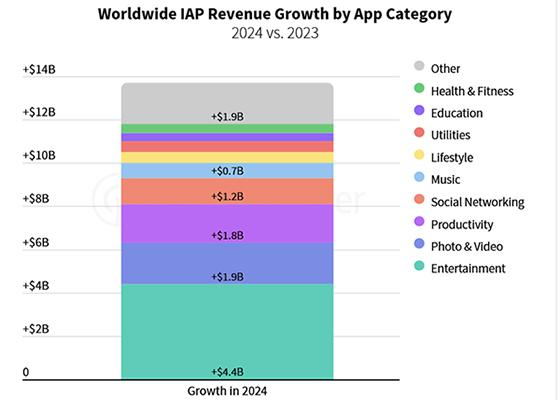
Image credit: Media Daily News
To make the strategy work, you need to set up payments through the Apple App Store or Google Play Store. Once you’ve done that, you can sell virtual goods like coins, subscriptions, or even real-world products.
The key is to offer users something they want but can’t get in the free version—whether it’s a special item or a time-limited offer that creates a sense of urgency.
Insider tip for app monetization
Another strategy is to make it easier for users to pay by making the entire transaction seamless—so much so that the user doesn’t even realize it. Nowadays, apps need to have an app wallet, Google Wallet, or Apple Wallet. These make transactions almost effortless. So, the more payment options you provide, the better.

Brian Wong
Product Manager
What are the pros and cons of in-app purchases model?
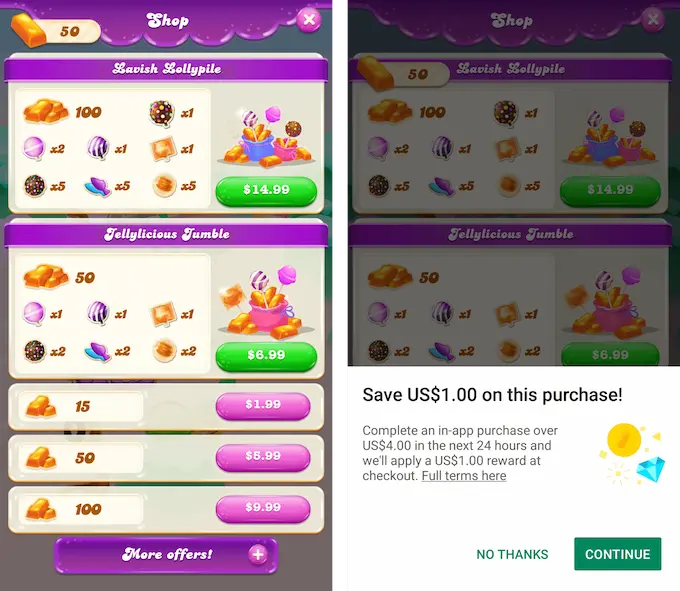
Source: Candy Crush
Take Candy Crush, for example. Players can buy extra lives and boosters right when they’re about to get stuck on a tough level. This is what keeps them coming back—and spending. It’s all about timing and making users feel like they need that little boost to keep going. Simple, but it works.
6. Data monetization
Data monetization lets you make money by using the info your app collects, like what users click, buy, or search for. When you understand user behavior, you can partner with brands to deliver ads or offers that make sense to them. In return, you earn revenue every time users interact with these personalized offers.
For you as an app publisher, this is a win-win. You give users a more relevant experience, and in exchange, you get paid. Think of it as helping users discover things they actually want without being intrusive.
Just make sure to follow compliance guidelines like the General Data Protection Regulation (GDPR) and include user agreements, so everything’s transparent and you stay on the right side of the law.
What are the pros and cons of data monetization?
| Pros | Cons |
|---|---|
| Helps you gain revenue from app insights | Needs to follow privacy rules like GDPR |
| Lets you offer personalized experiences to users | Can raise concerns about how data is used |
| Improves targeting of relevant ads for better user engagement | Requires secure storage and management of data |
| Enhances app value by understanding user behavior | Might create discomfort with users if not transparent |
7. Crowdfunding
Crowdfunding lets you raise money directly from your users to fund your app’s growth. Think of it as your loyal fans pitching in to support something they believe in.
By using platforms like Kickstarter or Indiegogo, you can offer rewards or early access in exchange for their support, making them feel like they’re part of your journey.
The beauty for you? You get funding without giving away equity or relying on ads. Plus, you can gather feedback from real users to fine-tune your app before it’s even fully launched. It’s like getting your own cheerleading squad, but with cash.
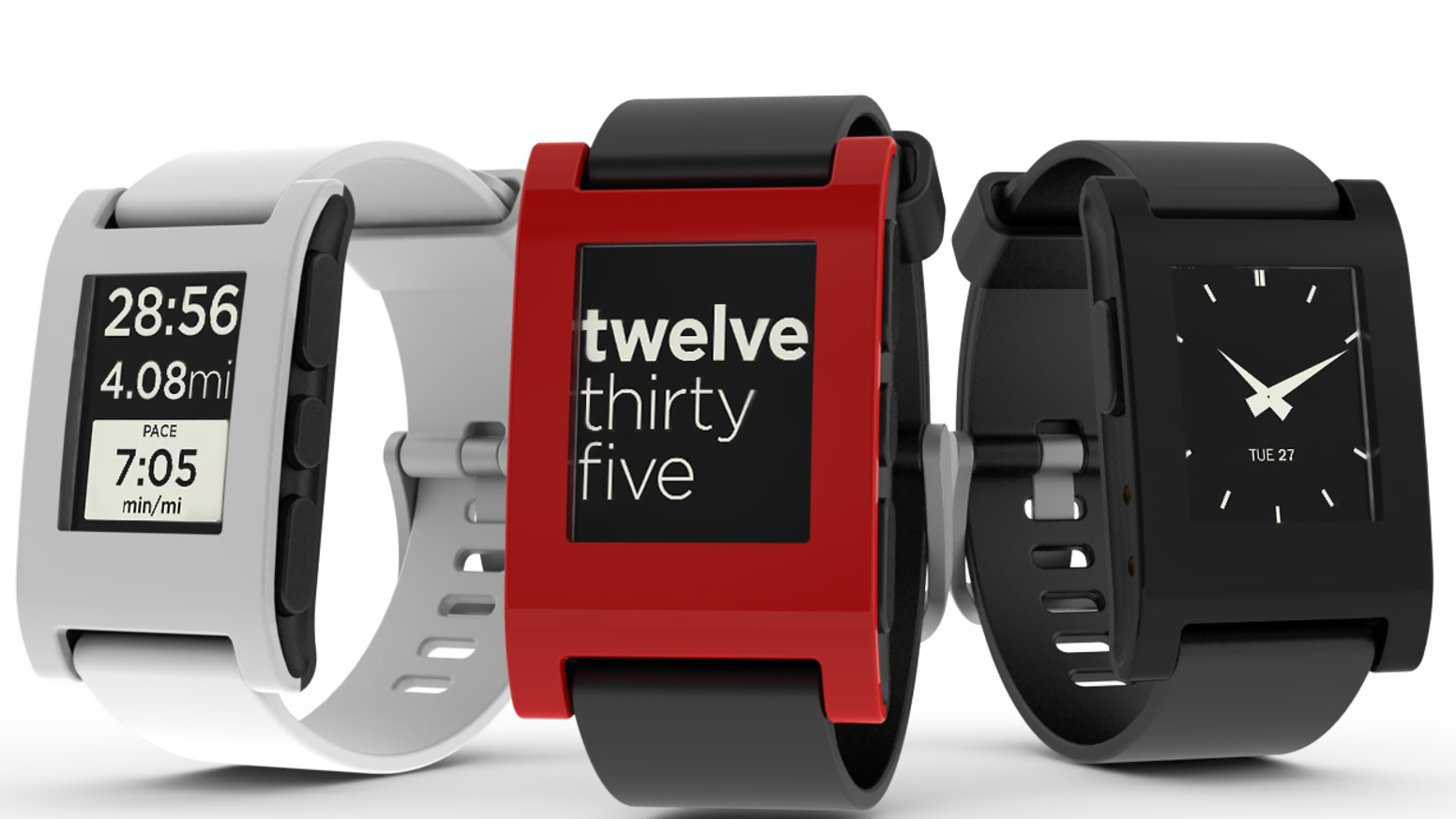
Source: Pebble
Pebble, the smartwatch company, was one of the earliest success stories in the crowdfunding space. Their Kickstarter campaign raised over $10 million, far surpassing its initial goal. Although Pebble was discontinued for a while, it remains a standout example.
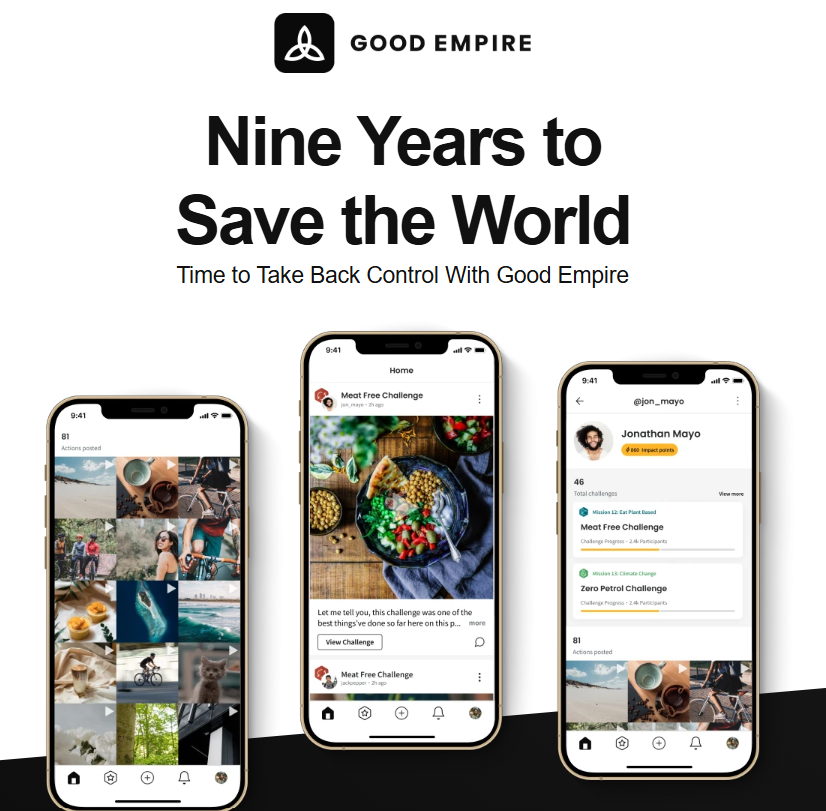
Another example is Good Empire. The app raised over $1 million through crowdfunding on Birchal before launching their app. Their strong mission—getting people to take action for the planet—resonated with investors, helping them secure funds and build a loyal community early on. This proved there was real demand before app development even started.
Check out their story here: Good Empire on Appetiser
What are the pros and cons of crowdfunding?
| Pros | Cons |
|---|---|
| Can rapidly raise capital without upfront fees. | No guarantee of reaching funding goals. |
| Tests public interest and demand for your product. | Ideas become public, increasing the risk of imitation. |
| Generates buzz and media attention during the campaign. | Requires significant effort to create and manage a compelling campaign. |
| Bypasses traditional financing methods like banks. | Failure can impact public perception of your business. |
People also ask:
1. Why should I make free apps?
Because free apps attract more people. Think about it—would you rather download a free app or pay $3 for one you’re not sure about? Most people pick the free option.
Free apps help businesses grow faster by getting more users. Once people download the app, there are creative ways to make money (without charging upfront).
2. Can you really make money with a free app?
Absolutely! Free apps make money through methods like subscriptions, in-app purchases, partnerships, or even selling tools to developers. Apps like TikTok and Candy Crush are free but make billions through ads, subscriptions, and in-app purchases.
3. Why do companies offer apps for free?
Free apps attract more users, which creates more chances to make money through ads, partnerships, and more. People don’t often pay for something when there are free alternatives.
4. What’s the difference between freemium and free apps?
Freemium apps are free to download but charge for extra features (e.g., Spotify Premium). Free apps rely on ads or sponsorships to make money.
5. Do free apps sell your data?
Some apps use user data to show personalized ads. Make sure to read the app’s privacy policy to understand how your data is used.
6. Are there any risks with offering a free app?
Yes, while offering a free app can attract more users, it’s hard to convert those users into paying customers. Additionally, relying on ads or data collection can create user privacy concerns.
7. How do I attract users to my free app?
Offer a compelling user experience with essential features for free, use effective marketing strategies (like social media, influencers, or app store optimization), and make the app easy to discover on app stores and search engines
8. Can free apps survive on ads alone?
It depends on the number of active users and how well the ads are integrated. Popular apps with high engagement can generate substantial revenue from ads alone, but apps with smaller user bases may need to rely on additional monetization strategies.
9. How can I make my free app more engaging so users keep coming back?
Focus on user experience, offer regular updates, provide valuable in-app content, and integrate features like rewards or challenges to keep users motivated. The more users interact with your app, the higher your chances of monetization.
10. Is it possible to offer a free app while still maintaining a sustainable business model?
Absolutely! Many free apps become highly profitable by using a mix of ads, in-app purchases, and strategic partnerships. It’s all about finding the right balance between attracting users and monetizing their behavior.
11. How do I ensure my free mobile app doesn’t annoy users with ads?
Place ads strategically (e.g., after levels or actions) and keep them non-intrusive. Offer users rewards for watching ads (like extra lives or features), and always give them the option to remove ads for a better experience.
Design your app to pay off
Now that you know how free mobile apps make money, it’s time to put them into action. Turning your app idea into a profitable business is what we do best. With smart data-driven strategies, we’ve helped apps go from zero to multi-million-dollar revenues.
Let’s chat and start building an app that’s set to scale and earn.

Jane Eslabra has 14+ years of experience producing content across traditional and digital platforms. She channels her strong passion for fostering tech startup growth through knowledge sharing.


